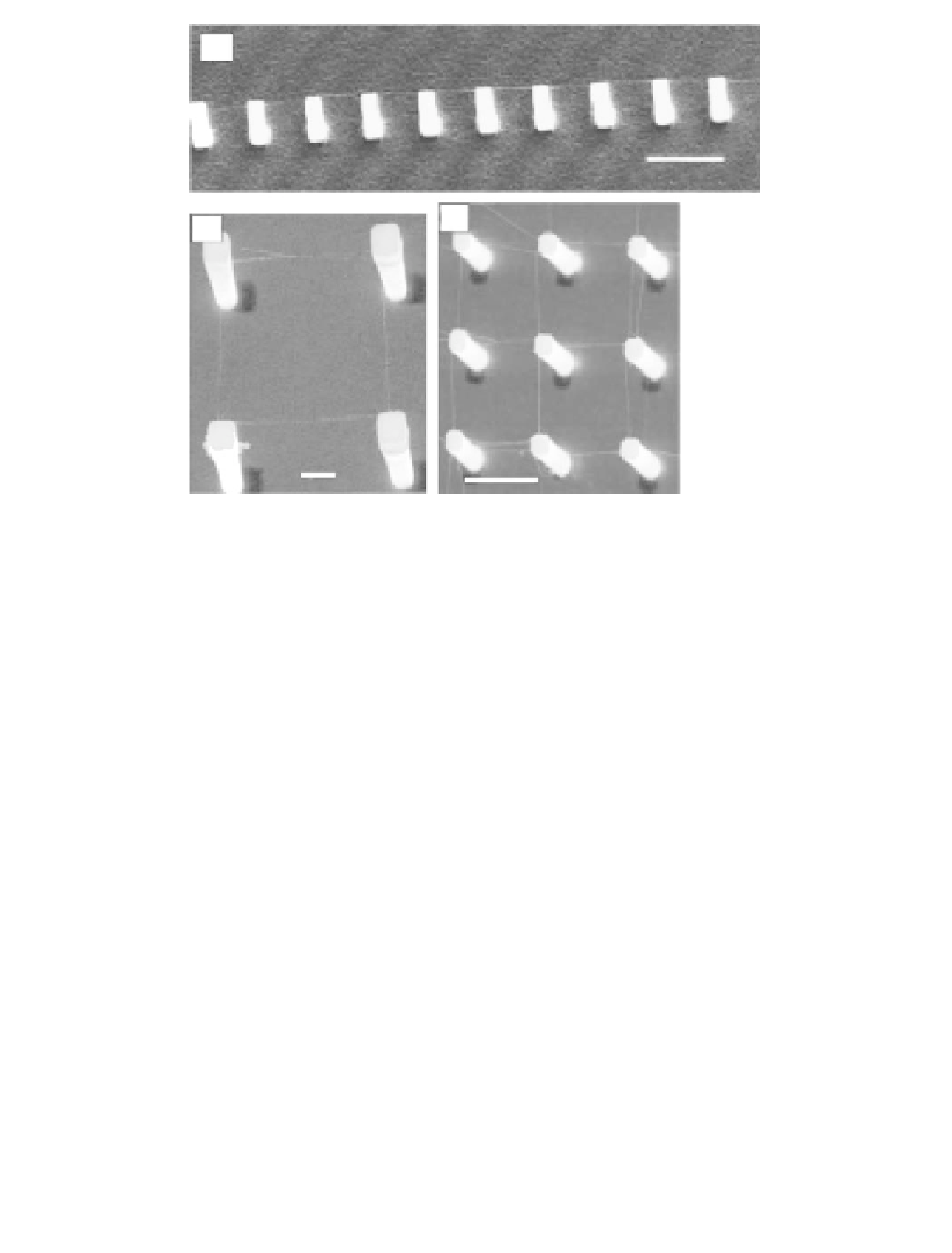Biomedical Engineering Reference
In-Depth Information
(a)
10
µ
m
(c)
(b)
1
µ
m
0.5
µ
m
FIGURE 12.2
Directed growth of suspended SWCNT. (a) A nanotube power-line structure. (b) A square of nanotubes. (c) An
extensive network of suspended SWCNTs. (From Franklin, N., Dai, H. (2000). An Enhanced CVD Approach to
Extensive Nanotube Networks With Directionality.
Adv. Mater.
, 12, 890-894.)
Clearly, the isolated-catalyst CVD method combined with electrode fabrication renders
abundant nanotube devices for further studies and provides a route to investigate growth
mechanisms and correlations between catalyst particles and nanotube structure (dis-
cussed in Section 12.2.3). Liu and his coworkers have developed a highly active Fe/Mo
catalyst by sol-gel synthesis for methane CVD growth of SWCNTs [20]. The high surface
area and large mesopore volume of this catalyst resulted in a nanotube-catalyst ratio as
high as 2:1 (1 g of catalyst yielding 2 g of SWCNTs). This is also an excellent example of
the scale-up of high-quality SWCNT synthesis that can be achieved by understanding
and optimizing the catalytic materials. Several groups have developed a gas-phase CVD
process to grow bulk quantities of SWCNTs [21-23]. Smalley and his coworkers [21] used
carbon monoxide as carbon feedstock and iron pentacarbonyl, produced by thermal
decomposition, as the catalytic source to achieve bulk production of SWCNTs.
Multi-walled carbon nanotubes have also been controllably obtained by the CVD
method in many research groups [24-27]. For example, Ren [24] has grown relatively
large-diameter and aligned “forests” of MWCNTs. Dai and coworkers [27] synthesized
aligned MWCNTs by CVD; here, the driving force for self-alignment is the Van de Waals
interactions between nanotubes, as shown in Figure 12.3.
Another significant advance in the CVD method for growth of CNTs is the use of alco-
hol. Maruyama and coworkers [28] recently reported the synthesis of highly pure
SWCNTs using alcohol. The authors attributed the high quality of the SWCNTs obtained
to the effects of OH radicals formed at high temperature, which can efficiently remove
amorphous carbon during nanotube growth. More recently, Iijima and coworkers [29]
found another method to produce extremely pure SWCNTs (purity 99.98%) by simply
adding water to ethylene during the CVD process, as shown in Figure 12.4. In this case,

